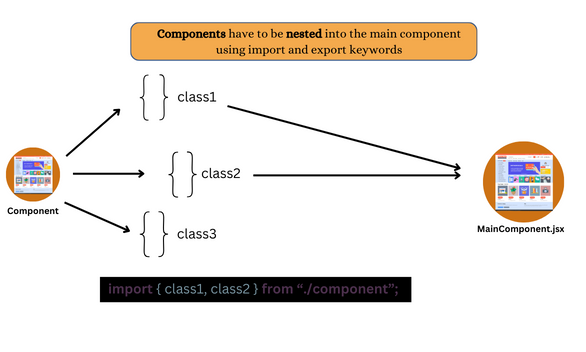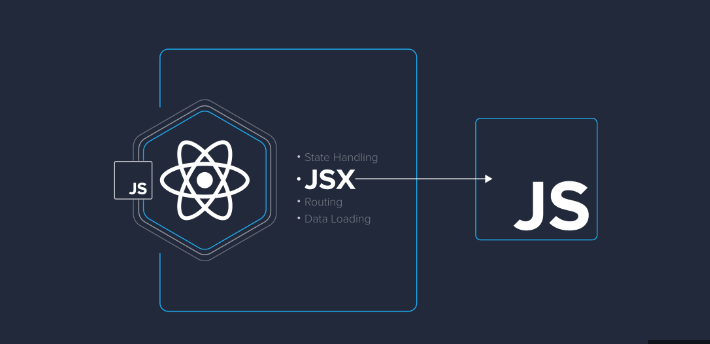React, developed by way of fb, is a JavaScript library for bilding user interfaces. It has gained enormous popularity in modern-day web development due to its declarative approach, aspect-based structure, and efficient rendering mechanisms. React allows developers to create interactive and dynamic user interfaces comfortably, making it a move-to desire for building scalable and maintainable applications.
React's key functions consist of a digital DOM, which permits green updates and renders simplest the components that have changed, resulting in better overall performance as compared to conventional approaches.
Understanding the Virtual DOM and How React Optimizes Rendering:
The Virtual DOM is a concept central to React's performance optimization strategy. Instead of directly manipulating the actual DOM (Document Object Model), React creates a lightweight virtual representation of it in memory. When state or props change, React first updates the virtual DOM and then compares it with the real DOM to identify the minimal set of changes needed. Finally, it updates only those specific parts of the real DOM, reducing the overall computational cost and improving rendering speed.
putting in a development environment with Node.js and npm:
Before diving into React development, it is vital to set up a improvement surroundings. Node.js, a JavaScript runtime, and npm (Node package supervisor) are fundamental tools in the React environment.
Node.js allows running JavaScript at the server aspect, and npm simplifies the management and installation of JavaScript applications. developers commonly use npm to install and manipulate dependencies, together with React itself and other libraries or tools required for his or her projects.
Creating a Simple React Application Using Create React App:
Create React App is a command-line device that automates the system of setting up a new React undertaking with best practices and a practical default configuration. It allow developers to be conscious of writing code without demanding approximately the preliminary project setup.
To create a simple React application, developers can use the following steps:
- Install Create React App globally: npm install -g create-react-app.
- Create a new project: npx create-react-app my-react-app (replace "my-react-app" with your desired project name).
- Navigate to the project directory: cd my-react-app.
- Start the development server: npm start.
Create React App gives a equipped-to-use undertaking structure, development server, and build scripts, allowing developers to pay attention to writing React components and capabilities rather than spending time on manual configuration.
Basic things to learn ReactJs
- File & Folder Structure
- components
- jsx
- props
- state
- Events
- Styling
- Conditional Rendering
File & Folder Structure: know-how the file and folder structure is essential for organizing a React project efficiently. an average React project structure consists of directories for additives, property, patterns, and configuration files. A well-organized structure enhances clarity, maintainability, and collaboration among developers.




Events: managing activities in React is similar to dealing with events in traditional HTML, but with a few variations due to React's artificial event system. learning how to handle user interactions, which includes clicks or input adjustments, is crucial for building interactive and responsive applications.

Conditional Rendering: Conditional rendering involves displaying different content or components based on certain conditions. It allows developers to create dynamic and responsive UIs. Learning how to conditionally render components based on state or props enables the creation of more versatile and interactive applications.

- use state
- use effect
- use ref
- use context
- use reducer
- use memo
- use callback
ReduxJS Toolkit
Redux Toolkit is a fixed of application functions and abstractions that simplifies the technique of managing state in a Redux-based application. It targets to streamline the not unusual styles and satisfactory practices utilized in Redux improvement, making it more green and concise. One key thing of Redux Toolkit is its integration of numerous Redux-associated libraries and ideas to offer a cohesive and opinionated improvement enjoy.
The central features of Redux Toolkit include:
- createSlice:
- createSlice is a utility function that reduces boilerplate code when defining Redux slices. A slice is a collection of reducers, actions, and selectors that manage a specific piece of the Redux state.
- configureStore:
- configureStore simplifies the process of creating a Redux store by incorporating default middleware, such as Redux Thunk for handling asynchronous actions, and enabling features like development tools integration with minimal setup.
- createAsyncThunk:
- createAsyncThunk is a utility for handling asynchronous actions, commonly used for API calls. It generates action creators that dispatch pending, fulfilled, or rejected actions based on the promise lifecycle.
- createEntityAdapter:
- createEntityAdapter simplifies the management of normalized state structures, often used for entities like users or items. It provides selectors and reducer functions to interact with normalized data more efficiently.
- Immer Integration:
- Redux Toolkit seamlessly integrates the Immer library, making it easier to write reducers with immutable updates. Developers can write simpler and more readable code, as Immer handles the immutability behind the scenes.
- Redux DevTools Extension Integration:
- Redux Toolkit integrates with the Redux DevTools Extension out of the box, offering a effective device for inspecting and debugging the state adjustments within the utility.
- Simplified Reducer Syntax:
- With Redux Toolkit, developers can use a simplified syntax for defining reducers using createSlice. This eliminates much of the boilerplate typically associated with traditional Redux reducer setups.
Testing React Applications
1.Unit Testing React Components:
- Tools: Jest, React Testing Library
- Focus: Isolate and test individual components.
- Key Aspects:
- Test rendering: Ensure components render as expected.
- Test component logic: Verify the behavior of component functions and methods.
- Use Jest snapshots: Capture component snapshots and detect unintended changes.
- Example:

example
2. Integration Testing:
- Tools: Jest, React Testing Library
- Focus: Test interactions between components.
- Key Aspects:
- Simulate user actions: Test how components interact with each other.
- Mock external dependencies: Isolate components from external services or APIs.
- Validate component integration: Ensure components work seamlessly together.
- Example:

example
3. End-to-End Testing (E2E):
- Tools: Cypress, Selenium, Puppeteer
- Focus: Test the entire application flow from the user's perspective.
- Key Aspects:
- Test user interactions: Simulate real user actions and validate outcomes.
- Test navigation: Ensure routing and navigation work correctly.
- Test state changes: Validate that application state changes appropriately.
- Example (Cypress):

example
4. Redux Testing:
- Tools: Jest, Redux Testing Library
- Focus: Test Redux actions, reducers, and middleware.
- Key Aspects:
- Test action creators: Ensure actions are created correctly.
- Test reducers: Validate that state changes as expected.
- Test middleware: Check how middleware handles actions.
- Example:

example
5. Best Practices for React Testing:
- Isolate Tests: Each test should be independent of others.
- Mock External Dependencies: Isolate the component by mocking external services.
- Test Edge Cases: Include tests for boundary conditions and unexpected input.
- Continuous Integration (CI): Integrate testing into CI pipelines for automated testing.
- Update Tests with Code Changes: Regularly update tests to match changes in the codebase.
 (886 x 591 px) (1).png)


